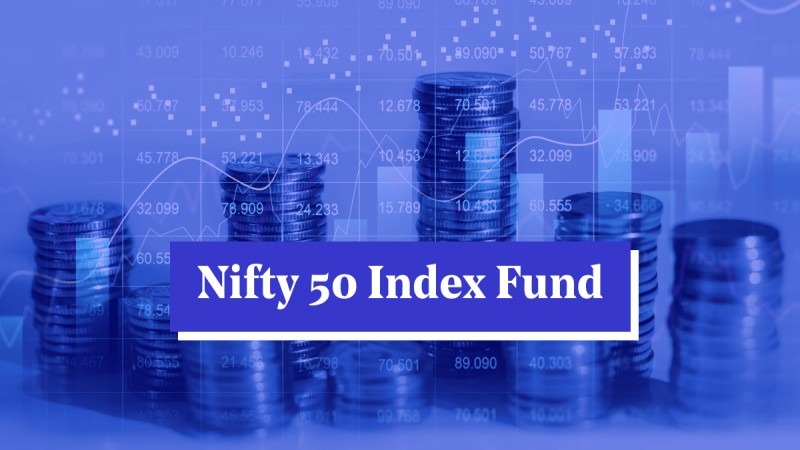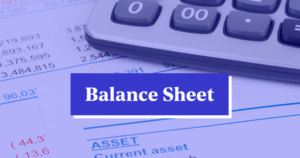As India’s economy continues its dynamic growth trajectory, global traders are increasingly turning their attention to the Nifty 50 index as a prime opportunity for market exposure. This benchmark index is not just a number; it represents the pulse of one of the world’s fastest-growing economies. For any trader looking to diversify and tap into this potential, understanding the Nifty 50 is essential. This comprehensive guide provides everything you need to know, from the index’s fundamental composition to actionable strategies for trading it through accessible instruments like CFDs.

What is the Nifty 50 Index?
The Nifty 50 is the flagship benchmark stock market index for the Indian equity market. It represents the weighted average performance of 50 of the largest and most liquid Indian companies listed on the National Stock Exchange (NSE). In essence, it serves as a primary barometer for India’s economic health and overall market sentiment. The index is calculated using a free-float market capitalisation methodology, which means it reflects the value of shares that are actually available for trading by the general public. Covering approximately 65% of the NSE’s total market capitalisation, the Nifty 50 spans 13 crucial sectors, including financial services, information technology, oil and gas, and consumer goods, making it a comprehensive and diversified reflection of the Indian corporate landscape.
What Companies Make Up the Nifty 50?
The Nifty 50 index is composed of 50 of India’s most prominent and established blue-chip companies. These are household names in India and increasingly recognised global players. The list of constituents is dominated by financial giants such as HDFC Bank, industrial powerhouses like Reliance Industries, and global IT leaders including Infosys and Tata Consultancy Services. The sectoral diversification ensures that the index is not overly dependent on the fortunes of a single industry, providing a more balanced view of the economy.

Top 10 Nifty 50 Constituents by Weight
The influence of each company on the index’s movement is determined by its weight. Below is an example of the top constituents and their approximate weightings, which illustrates the significant role the financial and energy sectors play in the Nifty 50.
| Company Name | Sector | Approximate Weight (%) |
| HDFC Bank Ltd. | Financial Services | 11.5% |
| Reliance Industries Ltd. | Oil, Gas & Consumable Fuels | 9.8% |
| ICICI Bank Ltd. | Financial Services | 7.5% |
| Infosys Ltd. | Information Technology | 5.2% |
| Larsen & Toubro Ltd. | Capital Goods | 4.0% |
| Tata Consultancy Services Ltd. | Information Technology | 3.8% |
| ITC Ltd. | Fast Moving Consumer Goods | 3.5% |
| Bharti Airtel Ltd. | Telecommunication | 3.3% |
| Axis Bank Ltd. | Financial Services | 3.1% |
| Kotak Mahindra Bank Ltd. | Financial Services | 2.9% |
How is the Nifty 50 Index Calculated and Maintained?
The index’s value is derived from the free-float market capitalization of its 50 component stocks. This method is preferred globally as it provides a more accurate picture of the market by excluding shares held by promoters, governments, and other strategic investors that are not readily available for trading.
To ensure the index remains a relevant and accurate benchmark, it undergoes a rigorous review and rebalancing process semi-annually, typically in March and September. During this rebalancing, companies that no longer meet the eligibility criteria (such as liquidity and market capitalization) may be removed and replaced by others that do, ensuring the Nifty 50 always reflects the current market leaders.
Key Factors That Influence the Nifty 50’s Price
The price movements of the Nifty 50 are influenced by a complex interplay of domestic economic data, corporate performance, global market trends, and central bank policies. Successful traders are those who can synthesise this information to anticipate market direction.
Macroeconomic Indicators
Domestic economic health is a primary driver for the Nifty 50. Key data points that traders watch closely include:
- GDP Growth Rate: A higher-than-expected GDP figure, for instance, a quarterly growth of 7.8%, signals a robust economy, which often creates strong bullish momentum for the index as it suggests higher corporate earnings.
- Inflation (CPI): The Consumer Price Index is a critical measure. High inflation can erode purchasing power and corporate profits, potentially leading the central bank to tighten monetary policy, which is typically bearish for stocks.
- Index of Industrial Production (IIP): This data reflects the output of various industrial sectors. Strong IIP growth indicates a vibrant industrial and manufacturing base, which is positive for market sentiment.
Global Market Trends and Foreign Investor Activity
In today’s interconnected world, no market operates in isolation. The Nifty 50 often exhibits a positive correlation with major global indices like the S&P 500. A significant driver is the activity of Foreign Institutional Investors (FIIs). Substantial net inflows from FIIs, such as over $1 billion in a single month, can inject significant liquidity into the market and propel the Nifty 50 higher.
Conversely, large outflows, often triggered by global risk-off sentiment or concerns about the domestic economy, can exert significant downward pressure. The USD/INR exchange rate is another crucial factor; a strengthening rupee often coincides with foreign investment inflows and a rising Nifty 50.
Reserve Bank of India (RBI) Monetary Policy
The decisions made by India’s central bank, the RBI, have a direct and immediate impact on the market. The repo rate—the rate at which the RBI lends to commercial banks—is the key policy tool. An interest rate cut makes borrowing cheaper for corporations and consumers, stimulating economic activity and is generally viewed as bullish for the stock market. In contrast, a rate hike, often implemented to control inflation, increases borrowing costs and can dampen corporate investment and consumer spending, making it a bearish signal for the Nifty 50.
How to Trade the Nifty 50: A Comparison of Instruments
Global traders can gain exposure to the Nifty 50 through several financial instruments. The choice depends on your trading strategy, capital, risk appetite, and whether your focus is on short-term speculation or long-term investment. The primary methods include Index Futures, Options, ETFs, and Contracts for Difference (CFDs).
Nifty 50 Futures and Options (F&O)
Futures and Options are standardised, exchange-traded derivatives available directly on the NSE. They are highly favoured by seasoned traders for speculation and hedging purposes. However, they typically require a larger capital outlay due to fixed contract sizes and margin requirements. Accessing them also necessitates a direct brokerage account in India, which can present logistical challenges for foreign retail traders.
Nifty 50 ETFs (Exchange-Traded Funds)
ETFs are funds that track the performance of the Nifty 50 and are traded on stock exchanges like regular shares. An example is the iShares India 50 ETF (INDY) listed on international exchanges. ETFs are an excellent vehicle for long-term investors who seek broad market exposure and want to benefit from India’s growth story over time. They are generally not suited for short-term trading due to lower liquidity compared to futures and the absence of leverage.
Nifty 50 CFDs (Contracts for Difference)
For global retail traders, CFDs are often the most flexible and accessible instrument for trading the Nifty 50. CFDs allow you to speculate on the index’s price movements—both up (going long) and down (going short)—without owning the underlying asset. The key benefits include:
- Leverage: Trade larger positions with a smaller amount of capital.
- Lower Capital Requirement: The barrier to entry is significantly lower than with futures.
- Flexibility: Easily profit from both rising and falling markets.
- Accessibility: Reputable global brokers, such as Ultima Markets, offer CFDs on major indices, often listed as ‘India 50’, providing a seamless gateway for traders worldwide.
A Step-by-Step Guide to Trading Nifty 50 CFDs
Successfully trading Nifty 50 CFDs requires a disciplined and structured approach. It’s not about gambling on price movements; it’s about making informed decisions based on a clear strategy and robust risk management.

Step 1: Choose a Reliable and Regulated Broker
Your choice of broker is the foundation of your trading career. You must select a broker that is regulated by a reputable financial authority. Key factors to consider include competitive spreads on indices like the India 50, a stable and user-friendly trading platform (such as MetaTrader 4 or 5), and responsive customer support. Global brokers like Ultima Markets provide these services, offering traders a secure and efficient environment to trade the Nifty 50.
Step 2: Develop a Trading Strategy
A robust trading strategy should integrate both technical and fundamental analysis. Use technical indicators like Moving Averages, the Relative Strength Index (RSI), and MACD on the Nifty 50 price chart to identify potential entry and exit points, trends, and momentum shifts. Crucially, align your technical signals with fundamental catalysts. For example, if technicals suggest an uptrend and the RBI has just announced a surprise rate cut, the confluence of factors provides a much stronger trading signal.
Step 3: Implement Strict Risk Management
This is the most critical element of long-term trading success. Professional traders focus more on managing their downside than on chasing profits. Key principles include:
- Use Stop-Loss Orders: Always place a stop-loss order the moment you enter a trade. This defines your maximum acceptable loss and prevents a single bad trade from wiping out your account.
- Appropriate Position Sizing: Never risk more than 1-2% of your total trading capital on a single trade idea. For example, on a $5,000 account, a 2% risk translates to a maximum potential loss of $100 per trade. This allows you to withstand a string of losses without destroying your capital base.
- Know Your Risk-to-Reward Ratio: Only take trades where the potential profit is significantly greater than the potential loss, ideally a ratio of 1:2 or higher.

Conclusion: Your Action Plan for Trading the Nifty 50
Trading the Nifty 50 offers a compelling opportunity to engage with one of the world’s most vibrant and promising economies. Its volatility and clear responsiveness to economic data make it an excellent vehicle for strategic traders. Success, however, is not just about correctly predicting the market’s direction; it is built on a foundation of diligent preparation and disciplined execution. Your decision to trade the Nifty 50 should be backed by a thorough understanding of its drivers and a robust trading plan. The key is to approach the market with a professional mindset. Start with a demo account to become familiar with its price action without risking real capital. Stay consistently informed on Indian economic news and global market sentiment. Above all, prioritise risk management in every single trade you take. This disciplined approach is what separates consistently profitable traders from the rest.
FAQ
Q: What is the difference between Nifty 50 and Sensex?
The Nifty 50 and the BSE Sensex are both premier benchmark indices for the Indian stock market. The main distinction lies in the number of constituent stocks and the exchange they represent. The Nifty 50 comprises 50 companies listed on the National Stock Exchange (NSE), whereas the Sensex is composed of 30 companies from the Bombay Stock Exchange (BSE). Due to its larger number of constituents, the Nifty 50 is generally considered to be a broader and more comprehensive representation of the Indian market.
Q: Can a foreigner trade the Nifty 50?
Yes, absolutely. While direct investment in Indian equities can be procedurally complex for foreign individuals, traders can easily gain exposure to the Nifty 50’s price movements. The most popular methods are through derivative instruments like Index CFDs (often called ‘India 50’) offered by global brokers or by purchasing Nifty 50 ETFs that are listed on international stock exchanges.
Q: What are the trading hours for the Nifty 50?
The underlying Nifty 50 index on the National Stock Exchange (NSE) has official trading hours from 9:15 AM to 3:30 PM India Standard Time (IST). However, one of the major advantages of trading Nifty 50 CFDs through global brokers like Ultima Markets is that they often offer extended trading hours. This provides much greater flexibility for traders operating in different time zones around the world.
Q: How much capital is needed to start trading Nifty 50 CFDs?
The capital required to trade Nifty 50 CFDs is significantly lower than for futures thanks to the availability of leverage. While the exact minimum deposit varies between brokers, traders can often open positions on the index with an initial capital of a few hundred dollars. However, it is highly advisable to start with sufficient capital to properly manage risk and withstand normal market fluctuations, with a recommended starting base of at least $500 to $1,000.
Q: Is the Nifty 50 a good investment for the long term?
Historically, the Nifty 50 has delivered strong returns over the long term, closely mirroring India’s impressive economic growth. For investors with a long time horizon, a strategy of periodically investing in a low-cost Nifty 50 index fund or ETF is a very popular and effective way to build wealth. However, like all investments tied to the equity market, it is subject to market risk and its value will fluctuate.




